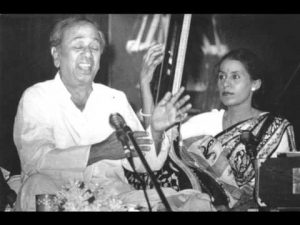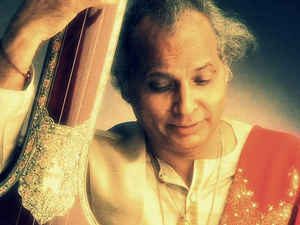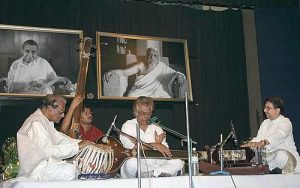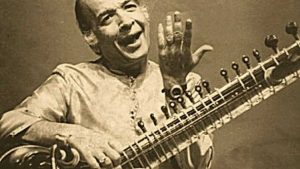| Told by | Pt. Asit Kumar Banerjee |
| Obtained by | Suranjita Paul |
| Date | 27th August 2016 |
| Place | 62/36/1 Hari Pada Dutta Lane, Kolkata- 700033 |
| About the speaker | Pt. Asit Kumar Banerjee is an eminent Rudra veena player and representative of Dagarbani Dhrupad in Kolkata |
| Tags | Bani, Dagarbani, Khandarbani, Nauharbani, Gauharbani, Da-Ga-Ra, Stroke, Dagur village, Swami Haridas, Parampara, 52 Nayak, Nayak Gopal, Nayak Tansen, Nayak Bakshu, Haddu-Hassu Khan, Bande Ali Khan, Bairam Khan, Imamuddin Dagar, Nasiruddin Dagar, Nasir Aminuddin Khan Dagar, Ziauddin Khan Dagar, Nasir Moinuddin Khan Dagar, Zia Fariuddin Khan Dagar, Rahim Faimuddin Khan Dagar, Bahuddin Khan Dagar, Rahimuddin Khan Dagar, Zair Faiyazuddin Khan Dagar, Wasimuddin Khan Dagar, Vocalist, Veena, Mizrab, Finger, Temple Music, Darbari, Bande Ali Khan, Veena, Pakhawaj, Alapchari, Raga Sruti, Jod, 14 types, Layakari Jod, Nom tom, 16 Angas, Bandish, Dagar Gharana, Application of Upaj, Pada, Sentiment of Lyrics, Sacred Music, Sprituality |
| Language | Bengali |
Pt. Asit Kumar Banerjee speaks:
This anecdote has been included in the Kolkata Music Mapping because the musician Pt. Asit Banerjee has been living in Kolkata for many decades. This also opens up, how a musician who was trained somewhere else and settled in Kolkata got shaped musically. This anecdote has been tagged to South Kolkata that do not directly relate to the anecdote but the residence of the speaker-musician. The period tag is based on the learning period of the speaker. – Editor
Verbatim:
– ???? ?? ???? ????? ??????????? ?????? ?? ?? ????? ?? ???? technically ??? ???? ????? ?????? ????? ?????? ???? ?????? ???? ???? ???? ??????? ?????? ?? characteristics?
?????? ????? ???? ??? ?? – ????????, ???????????, ?????????, ????????? ?? ?????? ??????? ????, ????????????? ??????? ???? ?????????? ?????? ???? ???? ???? ???? ????? ???…???????? ??? ?? ??? ???- ??? ???, ???? ??? ???- ????? ????? but the language is Bengali. ????? ???????? ????????? ???…???? ?? ??? ?????…??-?-?, ???? ????? ?? ?????? ?? ????? (????????) ??? ??? ??? ????????? ???? ??-?-?? ?? ????? ??? ??????? ??????? ??????? ???? ???? ???? ??? ????? ??????? ?? ????? ?? ?????, ?????, ??? ????? ?????? ?? ??????? ??? ?????? ???? ??? ???????? ??????? ????? ???? ??? ??????? ???? ???? ??? ?? ?????? ?????? ?????? ????????, ?????? ?????? ?????? ????????…?? ?? (????) ????? ???????? ??? ????? ??? ?? ?? ???? ???? ????????? ??? ????? ???? ????, ???? ??????, ???? ???? ????? ????? ???????? ?? ???????? ?????
???? ?????? ??????? ?????? ??? ???? ?????? ?????? ????? ???, ???? ??? ?? ???? ?? ????? ??? ?? ??? ?????? ?????? ????? ????? ??? ???, ????? ??? ?? ???? ???? ???? ?????????? ???? ??? ???? ???? ???? ???? ???????? ???? ???? ???????
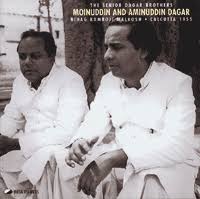
?????? ??????????, ??????????… ?????????? ???? ?????, ????? ??????????, ??????????, ??????????? ?? ??? ??? ???? ??? ????? ???? ?? ????? ??????????, ????? ?????????, ????? ?????????? ???? ???????????? ??????????-?? ???? ????? ??????????? ?? ????? ?? ??? ?? ?????? ??? ???? ?? ?????????? ?? ??????? ??? ?????????? ????, ??? ??? ?? ??? ???? ?????????? ????? ???? ????? ?????????? ??? ??????? ?? ?????? ???? ???? ??? ??????? ????? ???? ??? ??…??????? ?????? ??? ?????? ???? ?? ????? ?????????? …?????? ????? ???? ????? ?????????? ????, ???????? ?? ??? ???? ??? ?????? ?? ????????? ??? ??? ???? ???? ???? ??? ?? ??? ???? ????
?? ?? ??????? ?? ?????? ???? ??? ???? ???? ?????? ?????? ??? ?????, ???? ?????? ??? ????? ?? ?????? ?? ???? ?????? ??? ?? ????? ?????? …??, ???, ???, ???……?? ????? ??????? ????? ???? ?????? ??, ???, ???, ??? ???? ????? ?????? ????? ?????? ????? ????? ???? ??? ?? ???? ???? ????? ???? (????? ????????) ??? ??? ??? ?????? ?? ??? ???? ????? ??? ????? ?? ?????? ???? ??? ?? ????? ?? ????? ?????? ?????? ???????? ?????? ???? ????? ??????? ????? ????? ?????? ?????? ?????? ??? ????? ??????? ????????? ??????? ????? ??? ??? ????? ??? ???????????? ???? ???? ??? ???? ?? ???? ??? ?? ?????? ??? ????? ??? ?????? ??? ???????? ?? ???? ?? ??? ?????? ??? ????? ??????? ?????? ?? ? ???? ?????? ??? ? ???? ????? ????? ????
??? ????? ????? ‘?? ??? ????? ?????? ??:’ – ?? ????? ?????? ???????? ???? ?????? ???? (??? ????????) ?? ???? ????? ??? ??? ???????: ??? ?????-?? ???? ????? ?? ?????? ????????? ???? ??? ??????? ???? ????, ???????? ???? ???? ????????? ???? ?? ???? ?????? ??? ??? ???? ?????? ??????? ???? ??????? ??????? ?? ????? ??????? ????? ???? ????? character ???? ??? ???? ????????? ???????? ?? ?? ? ???????? ??? ???? ??? ?????? ??? ???? ?? ??? ?????? ????? ?????? ???? ??? ???? ????? ??????? ??? ?? ?????? ???? ?? ????? ?? ?? ????? ??? ?? ??? ??????? ????? ????? ??? character ?? ????? ??? ???? ????? ????? ?????
?? ????????? ??? ?????? ???? ???? ?????? ??? ???????? ????? ???????? ????? ???? ???? ???? ???? ???? ????? ????? ???…????? ????? ????? ??? ???? ?? ????? ?????? ???? ??? ???? ???? ??? ???? ???? ???? ?????? ?? ??? ????? ????? ??? ???? ????? ????? ???? ?? ??? ???? ??? ???? (??? ????????)? ?? ????? ???? ?? ???? ?? ???? ??????? ???? ???? ??? ???? ??? ?????? (??? ????????)? ?? ?????? ??? …?? ????? ?????? ???? ??? ???? ????? ????-????? ????? ???? ???…????? ???? ?? ????? ????? ??? ????-???? ???, ????? ??? ??? ??? ???? ?????? ??? ????? ???? ?????? ???? ??? (?????? ????????)?
Second thing ???? ??? ?????, ?????, ?????? ?????? ?? ??? ???? ??????? ????? ??? ??????? ??? ??????? ????? ????? ?? ???? ????? ???? ??? ??? ??????? ?????? ?????, ?????, ?????? ?????? ??? ??, ?????? ??? ?? (??? ????????)? ?? ????? ?????? ??? ??? ?????, ?????, ?????? ?????? ??? ??? ??? ??? ?????? ??????? ??? ???????????? ?? ?????? ?? ???????? ??? ?????, ?????, ?????? ??????……??? ??????? ???? ??? ????, ???? ??????? ???? ????? ???? ???? ??? ?????? ??????? ?? ??????? ???? ???? ?? ????????? ????, ???? ????????????? ?? ??? ???? ????????? ?? ????? ???? ????? ???? ????? ??? ?? ??????? ?????, ??? ?????? ????? ??? ?? ???? ???? ???? ??? ????? ?????…?? ????? ?? ????? ???? ????? ?? ??? ???? ?????? ?????? ????? ???????????? ?? ????? ????? ???? ????? ???? ?? ?????? ???? ???? ???? ?????? ???? ?????????? ????? ??? ?? ??? ???? ????? ?? ?????? ???? ?? ?????? ????? ???? ???? ???? ??? ?? ????? ?? ???????, ?????? ???????? ??? ???? ?????? ????? ?????? ???, ???? ?????? ???? ???? ?? ??? ?????? ???? ?? ????? ???? ??? ??????? ????
Verbatim by: Dr.Suranjita Paul
Translation:
There are four kinds of Bani – Dagarbani, Khandarbani, Nauharbani, Gauharbani. The characteristics of each depend on the place of origin. For instance, in the Bengali language, there are different dialects. The people of Bankura speak in a particular dialect; some people say “chhilum”. But the language is Bengali. Dagar is the stroke on the bamboo. The sound produced is ‘Da-ga-r’. And this was a method popular in the Dagar village. And it was handed down through the disciples of Swami Haridas Dagar. He created a band of 52 Nayaks. Among them were ustads like Nayak Baiju, Nayak Tansen. This was the generation of Nayak Baba Gopaldas.
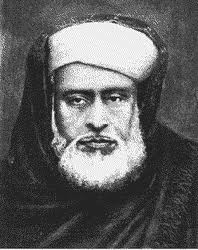
The first musician with a title was Imam Baksh. And thus it began. There was Haddu Khan and Hassu Khan. After that, Bande Ali Khan, Bairam Khan. The prosperity of the Dagar gharana began from here. This is the history we can trace. Imamuddin, Nasiruddin, Nasir Aminuddin, Ziauddin, Raimuddin were four brothers. Then there was Nasir Amiruddin, Nasir Faiuddin. Ziauddin’s son was Bahauddin. He had one son. There was no one else. Rahimuddin had Faimuddin Khan Dagar. There is no one left in that line either. Imamuddin Khan Sahib’s sons are there in Jaipur. Isn’t Sapna Dagar in Jaipur? They are in Jaipur. And Faizudddin’s son Wasimuddin Khan dagar is in Delhi. None of them play the veena. And as for the style, unlike others who use the mizrab, we have to play with our nails. Four fingers come into play. Four fingers of both hands have to move. The string is very thick. (PLAYS). If I use a mizrab, it will sound different.
The early exponents of the Dagar gharana were all temple musicians who later moved to the darbar or court of the King. Bande Liah sahib was a veena player, but I can’t think of anyone else who played this instrument. After ustad, I can’t think of anyone else. I played the veena. I came before her, but she is in great form now. She has some great things. “ Eta gaiki ange, om hari ananta narayana namah” – the Dhrupad begins with this. (SINGS). This is how it was sung and then the composition would begin on Vishnu or Brahma. It was a part of haveli music. Then we saw that the pakhwaj was being played with it. The music followed the singing. The veena wouldn’t play if the mirzab was used like it is in case of the sitar. A fast pace also ruin the characteristics of veena.
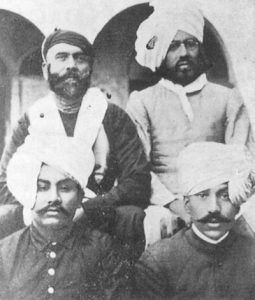
In the alaap in the Dagar gharana, we describe the shruti of each of the raagas. This will differ. As for jod – there are 14 different kinds. There is Laykari Jod. But the thing is, how much time will we get on stage? So we perform two or three. (SINGS). Then, you could increase the pace and go to Nom tom. (SINGS). Now the mirzab will start. There are 16 angas which are placed here, then we move on to the Nom tum, and then we start the Bandish. (SINGS). In the Dagar gharana, there is no ekgun, dvigun, teengun, chargun (Tempo). I can keep that in laykari. We have Upaj. (SINGS). What is important is the Pada, the sentiment of the Pada, and the reaction to the Pada. I am calling upon the deity. I am not performing in my own name. I am calling upon Shankara. I have to look up to the heavens. This is the main thing. In our Dagar gharana whttp://dhrupad.com/about-dhrupad/dagar-tradition/e have to live life in purity,
Translated by: Sarbajaya Bhattacharya
Picture Courtesy: Google
https://www.allmusic.com/album/bihag-kamboji-malkosh-mw0000974416
http://dhrupad.com/about-dhrupad/dagar-tradition/
Edited & Designed: Dr. Suranjita Paul
Data processed at SAP-DRS Lab, Department of Instrumental Music, Rabindra Bharati University

